Capped Honey Combs!
Hey everyone check out my last post where I took a quick video of the voracious foraging activity on these capped honey combs we recently harvested!
https://hive.blog/nature/@craigcryptoking/bees-foraging-their-own-honey
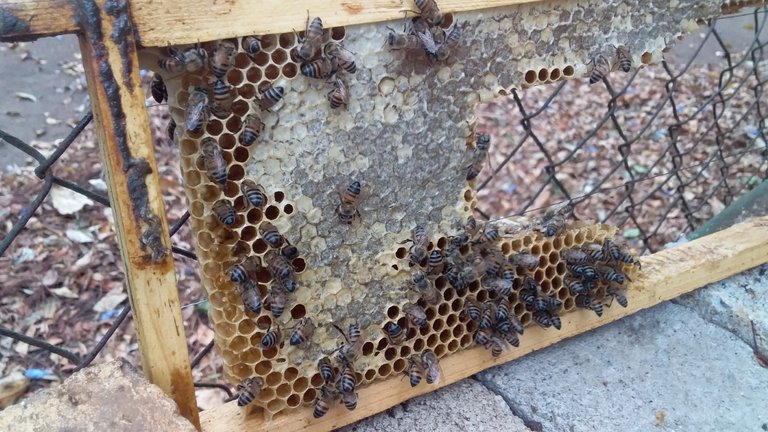
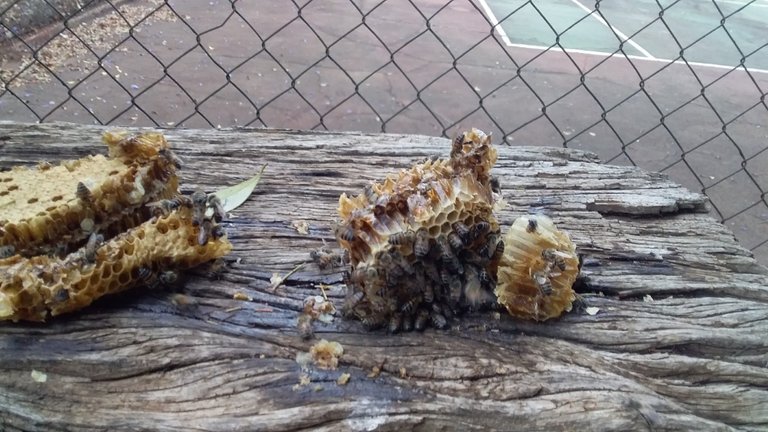
I put these out for the bees to clean up, they were honey mixed with brood so sadly could not spin the honey off, instead I let nature do what nature does!
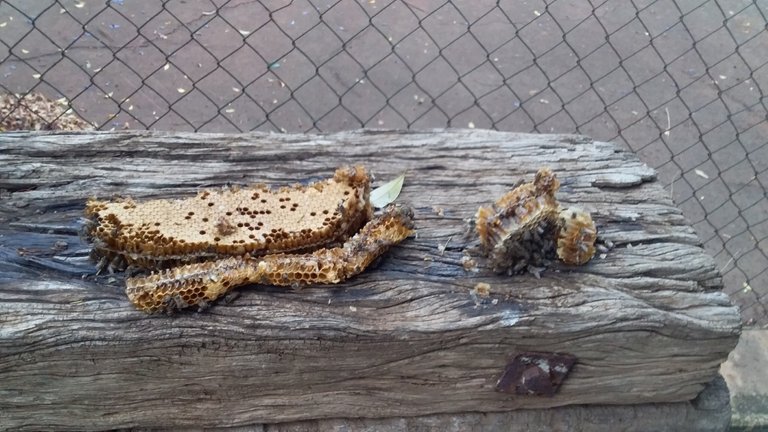
I placed these on logs next to the bee-hive to make sure we had a good chance of catching a swarm in the interim, alas to date nothing but we have hope!
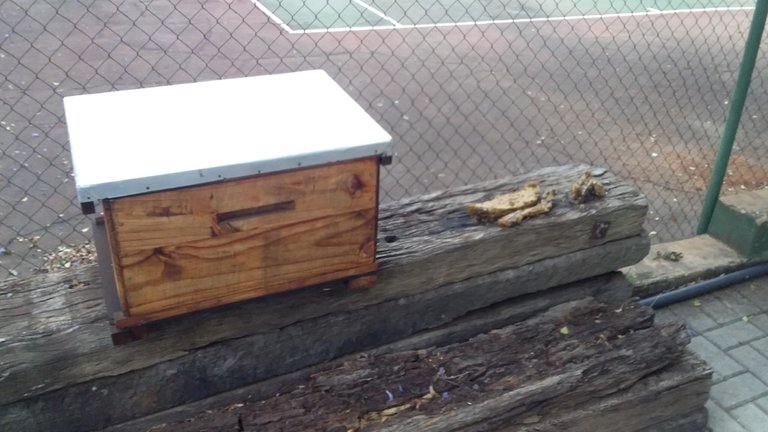
Beekeepers may remove the entire honeycomb to harvest honey. Honey bees consume about 8.4 lb (3.8 kg) of honey to secrete 1 lb (454 g) of wax,[1] so it makes economic sense to return the wax to the hive after harvesting the honey. The structure of the comb may be left basically intact when honey is extracted from it by uncapping and spinning in a centrifugal machine—the honey extractor. If the honeycomb is too worn out, the wax can be reused in a number of ways, including making sheets of comb foundation with hexagonal pattern. Such foundation sheets allow the bees to build the comb with less effort, and the hexagonal pattern of worker-sized cell bases discourages the bees from building the larger drone cells.
"Artificial honeycomb" foundation plate in which bees have already completed some cells
Fresh, new comb is sometimes sold and used intact as comb honey, especially if the honey is being spread on bread rather than used in cooking or as a sweetener.
Broodcomb becomes dark over time, because of cocoons and shed larval skins embedded in the cells, and the tracking of many feet, called travel stain[2] by beekeepers when seen on frames of comb honey. Honeycomb in the "supers" that are not used for brood (e.g. by the placement of a queen excluder) stays light-colored.
Numerous wasps, especially Polistinae and Vespinae, construct hexagonal prism-packed combs made of paper instead of wax; in some species (such as Brachygastra mellifica), honey is stored in the nest, thus technically forming a paper honeycomb. However, the term "honeycomb" is not often used for such structures. More here as per wikipedia.org https://en.wikipedia.org/wiki/Honeycomb
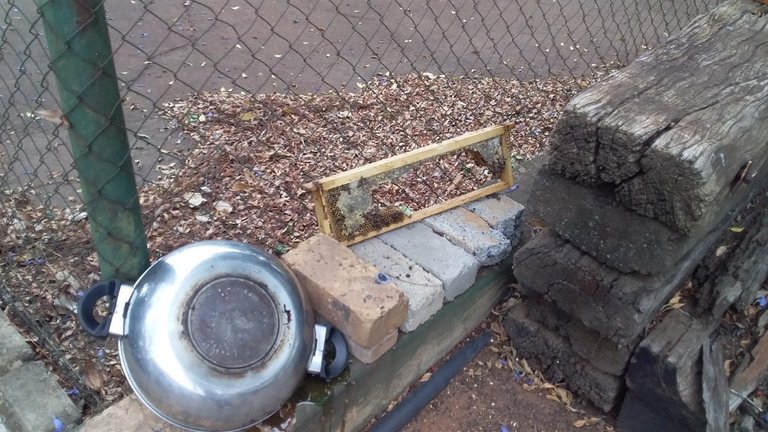
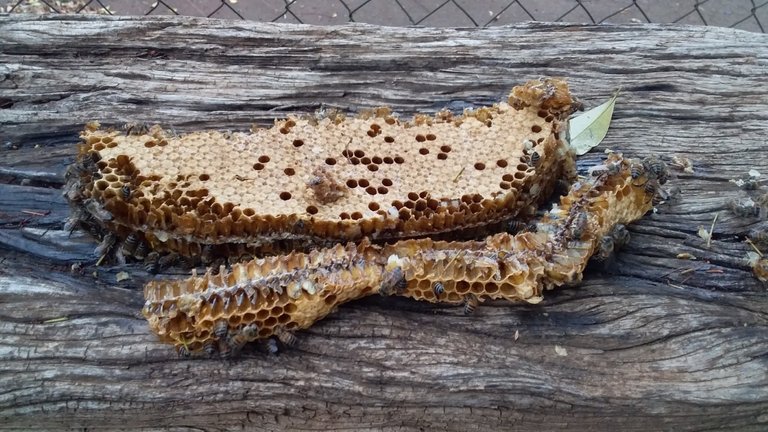
Within two days between the birds and the bees these were pretty much eaten clean, including most of the wax too.
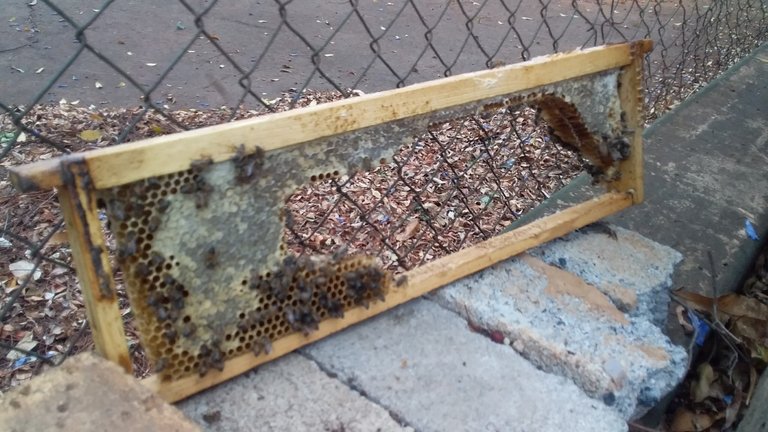
Nature the incredible!
I trust you have an amazing Tuesday!
Love and light, be blessed.
Cheer$:)
Congratulations @craigcryptoking! You have completed the following achievement on the Hive blockchain and have been rewarded with new badge(s) :
You can view your badges on your board and compare yourself to others in the Ranking
If you no longer want to receive notifications, reply to this comment with the word
STOPThanks boss
Thank you for sharing this amazing post on HIVE!
Your content got selected by our fellow curator @deepu7 & you just received a little thank you via an upvote from our non-profit curation initiative!
You will be featured in one of our recurring curation compilations and on our pinterest boards! Both are aiming to offer you a stage to widen your audience within and outside of the DIY scene of hive.
Join the official DIYHub community on HIVE and show us more of your amazing work and feel free to connect with us and other DIYers via our discord server: https://discord.io/diyhub!
If you want to support our goal to motivate other DIY/art/music/homesteading/... creators just delegate to us and earn 100% of your curation rewards!
Stay creative & hive on!
Sweet thanks a ton. Cheer$;)
Sucks you didnt get to make honey out of that tray. But good to see nature made use of it regardless. I am going to try for a year or so without a queen excluder and see if I can get honey. But otherwise thats what may be needed to stop brood cells from forming where the honey is I think..
By the way, I set up a community for pollinator content. Feel free to share your future bee posts or about other pollinators in my community.
https://peakd.com/c/hive-173511/created
The Pollen Flow